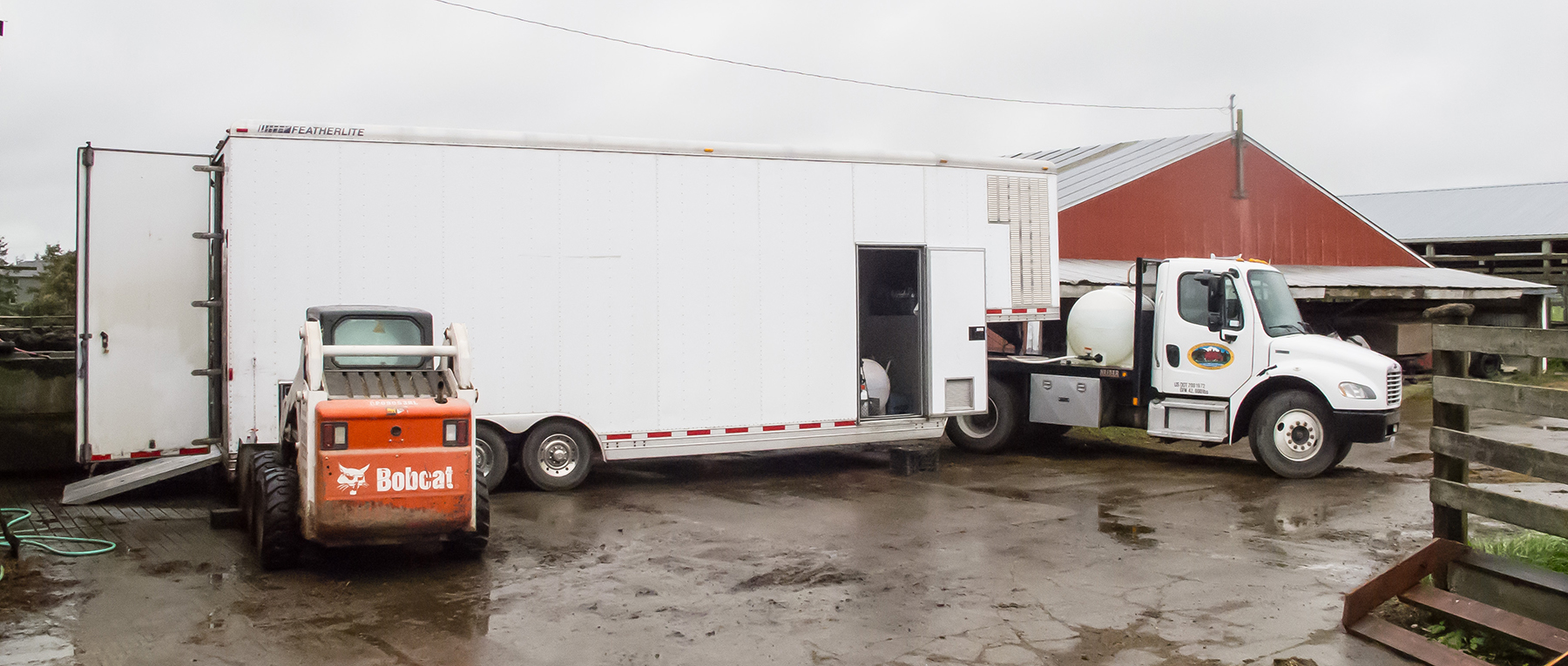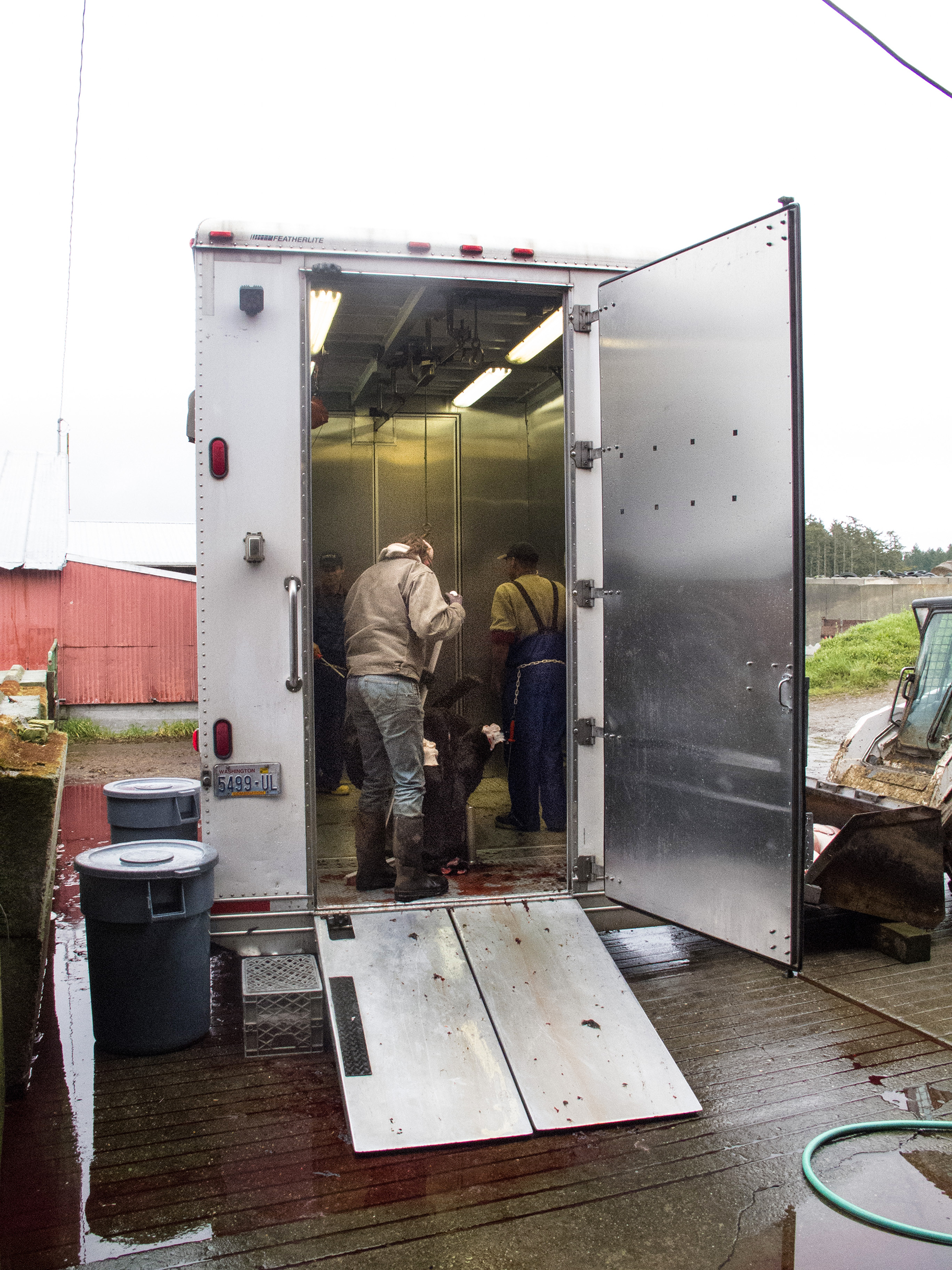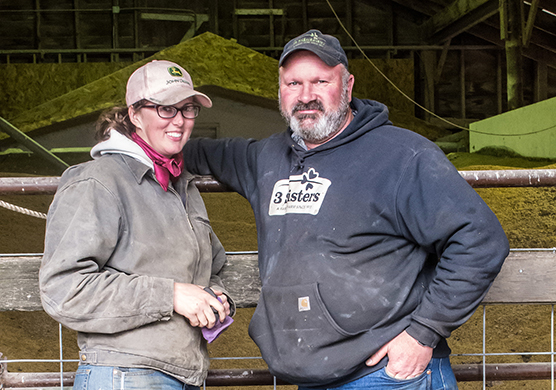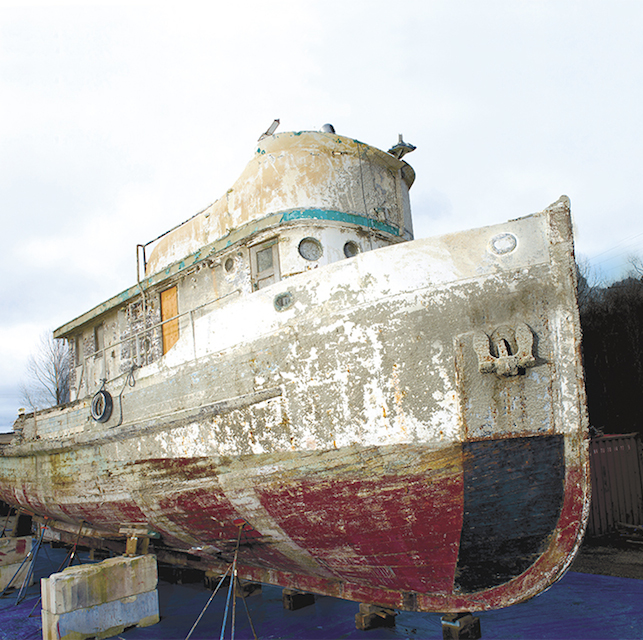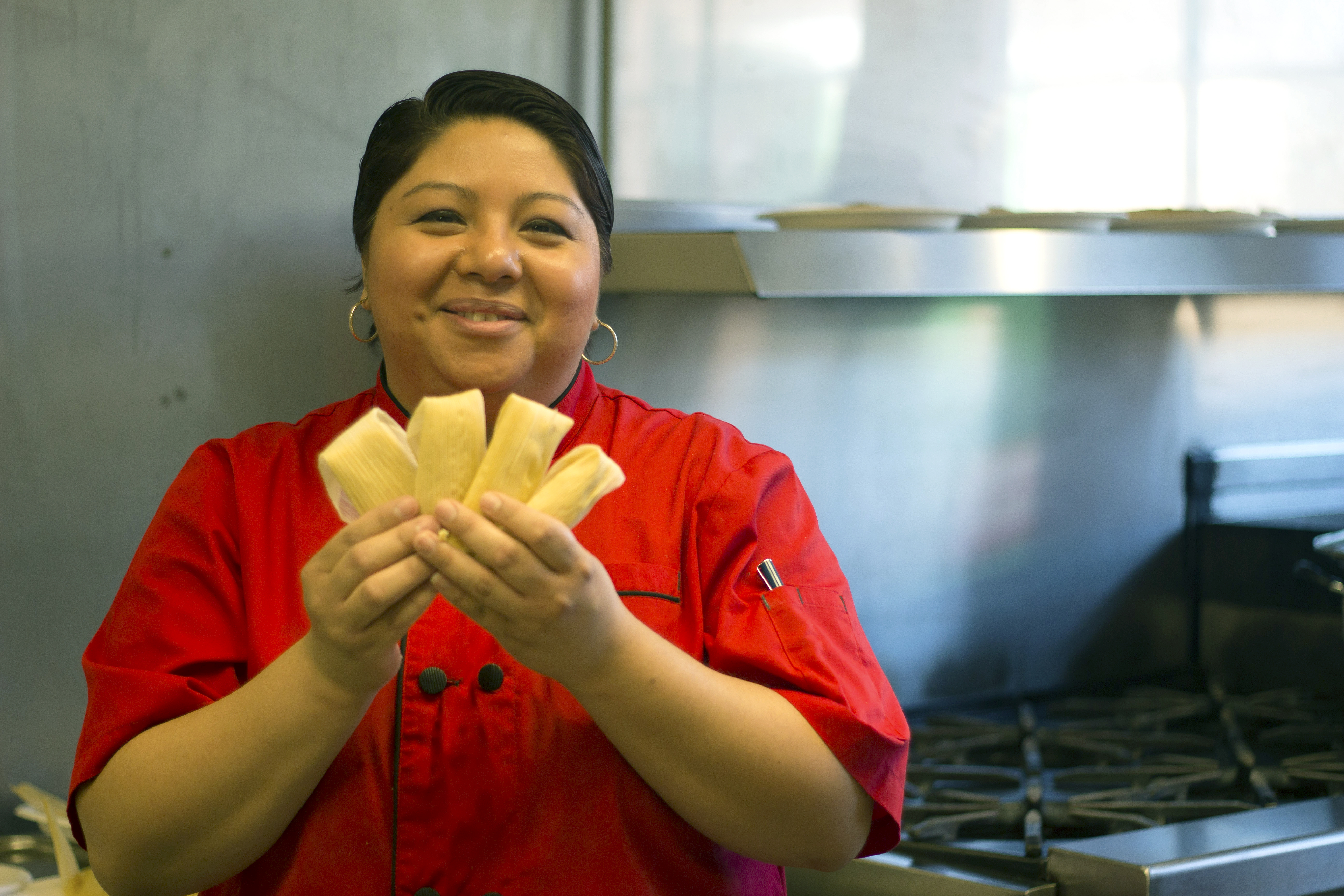Standing
on a dirt path, alongside a neat stack of irrigation pipes, between two barns, and under an intense gray sky, the matte-gray U.S. Government vehicle looks out of place. Inside, a USDA inspector is blasting NPR. Like me, he’s waiting for the trailer. Before long, the sound of a throaty diesel engine lets us know it’s here. A 36-foot semitruck pulls in, slowing near the cattle holding pen. It’s 7:37 a.m. at Three Sisters Family Farm on Whidbey Island, and the slaughterhouse has arrived.
In the past few decades, traditional brick-and-mortar slaughterhouses, like farms themselves, have become increasingly large and centralized. For small farmers who cannot afford their own slaughterhouses, it’s never been cheap or particularly viable to haul their animals to be processed. As a result, fewer and larger farms provided a majority of the available beef. The trend was particularly hard on isolated farmers, like those in Washington’s San Juan Islands.
In 2002, an intrepid group of Lopez Island farmers decided to do something about this. After a bit of planning and design, they formed the Island Grown Farmers Cooperative (IGFC) and commissioned Bellingham custom-trailer company Trivan to make the first USDA-certified mobile slaughter unit (MSU). Similar trailers had been built before, but they were never equipped with USDA certification, a grading process that is almost universally required by stores and restaurants that buy beef, lamb, or pork. It was a huge leap forward particularly for island farmers, who were affected by the high cost of ferrying their animals to mainland slaughterhouses. Now a slaughterhouse comes directly to farms like Three Sisters, making the process more efficient and less stressful for the animal.
In the 40 steps it takes me and the inspector to reach the truck, two men jump out of the cab and immediately start modifying its appearance. As if on cue, two more people arrive, Ron Muzall and his daughter, Jennifer. Amid smiles and jokes from the Muzalls about their seven-minute tardiness, the butchers open doors, sharpen knives, lower ramps, and start generators. The trailer is expanding and coming alive. It’s a fully functional slaughterhouse, retrofitted to fit inside a semi-trailer. It provides a sterile environment and holds the necessary equipment to kill, skin, clean, and refrigerate up to 8,000 pounds of meat. With two well-trained butchers, the trailer can process as many as eight cows, 24 hogs, or 40 sheep in a day.
As I walk around the back of the truck, I’m met with a gleaming stainless-steel interior equipped with sinks, racks of knives, power outlets, winches, and hoses. A power saw capable of ripping through spinal cords sits in a special holder, and on the ceiling, two hefty hooks hang motionless. They start to sway as butcher Jim Wieringa jumps inside. He’s changed from his jeans and sweatshirt into a T-shirt, rubber boots, and a heavy-duty rubber apron.
“How many we got today?” he asks. Muzall thinks it’s four cows and eight hogs. Or maybe five cows, he’s not sure. “No problem,” says Wieringa, attaching a heavy steel shelf to the outside. The trailer is innocuous—completely white on the outside with no obvious special equipment.
After another few minutes, Muzall steps up beside me. “No, it’s four cows.” Wieringa says that’s OK, loads a pistol-like bolt stunner, and waits for the first cow.
For me, the initial thought of a rolling slaughterhouse was terrifying, and I wondered about my ability to witness an event that I, a raging carnivore, obviously needed to see. If anything, the process made me more respectful. There is no rushing, no surge of adrenaline, no “git ’r done” mentality. It is quiet, peaceful, warm, and in an odd way, friendly. The 2-year-old black cow is loaded into a custom box that isolates and supports its body and head. Wierang carefully places the barrel of the bolt stunner at the center of its head, and, with a puff of sound, a bolt is driven into the cow’s skull, stunning it instantaneously and completely into unconsciousness.
I wait for some hasty action, some aggressive move, but none come. The load box is opened slowly. Wieringa and Muzall work together to gently lay the motionless cow on its side, and, with quick precision, Wieringa uses his long, sharpened butcher’s knife to cut the jugular and allow the cow to bleed out. The whole process takes about 90 seconds. It is the most respectful, graceful process I could ever have imagined—so quiet I can hear the chirping of birds throughout, so still I can follow the last wisps of steam wafting from the cow’s mouth up into the barn rafters.
Wieringa puts away his knife and hoists the animal on the trailer’s built-in winch, where it hangs for easy cleaning and skinning. As they do, the USDA inspector steps up and starts testing the meat to ensure it meets USDA standards. Pigs grunt, a dog barks, and Thin Lizzy plays on the trailer’s radio.
As Wieringa gets down to business, Muzall reflects on the scene we just witnessed: “If I had to go, that’d be the way I’d want it done.” Well over six feet tall, sporting a bit of a gut and an ash-gray beard that contrasts his cheeks, which are almost always red from laughing, the 52-year-old is the sort of man who’d make Paul Bunyan feel like a boy—the type of proud American farmer you see on truck commercials but never really expect to exist: part biologist, part businessman, part philosopher. A fourth-generation farmer, Muzall is well known in the local farming community, and a co-founder of the IGFC that initiated creation of the USDA-certified MSUs on which his farm now depends. While it’s paying off now, it was a risk in the beginning, Muzall admits—but one worth taking in light of the recent slaughterhouse centralization.
Within 45 minutes, the cow is cleaned, skinned, trimmed, and cut into two. The halves are then slid along hooks into the trailer’s back refrigeration area. Though not nearly as efficient as a modern slaughterhouse capable of moving hundreds of animals a day, the MSU gives small and medium-sized farmers like Muzall and his family a direct way to control their meat and its trip from farm to table. “Without the truck,” he says, “we would have had to build our own slaughterhouse, which we couldn’t have afforded.” But with the truck, Three Sisters can slaughter and butcher its own product and sell it straight to restaurants and grocery stores like PCC or out of their own family store just a few miles from the farm. But Wierang and Muzall agree: The truck has its limits.
First, the trailers certainly aren’t free. Trivan advertises the basic 36-foot model, a near-replica of the one I saw at Three Sisters, for just over 200 grand. To make it profitable, a tight cooperative of committed farmers has to ensure a trailer is operating as many days of the week as possible. But due to the inconsistent nature of farming and the seasonality of prime slaughtering times, it does happen that days go by without the truck going anywhere.
Yet the benefits exceed the challenges. What started with one truck has now expanded across the country. Trivan has recently started selling its trailers abroad, one to Chile and one to Papua New Guinea—where it’s used to slaughter hogs at a gold-mining camp, presumably with Indiana Jones as the butcher. But the MSUs’ most tangible benefit cannot be measured in sales or the number of animals processed; it’s that it allows dedicated families like the Muzalls to finish what they start on their own farms, with their own people, with the same care and respect they’ve paid their animals since birth. MSUs allow farmers to take pride and control of what they produce, from beginning to end.
